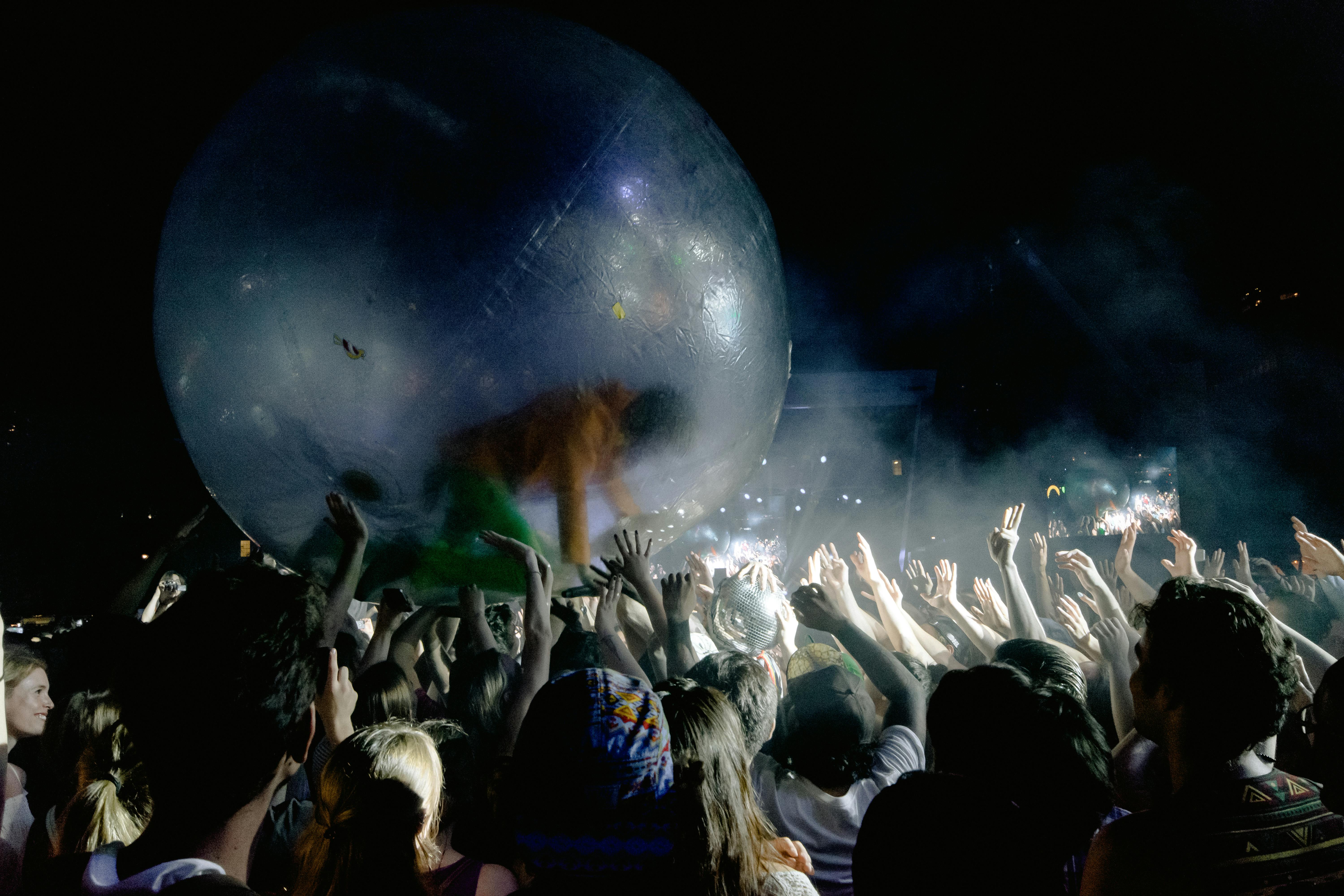Ball pythons are one of the most commonly kept pet snakes in the world, and for good reason. Not only are they relatively small in size, making them easy to care for, but they also have a docile temperament and an attractive appearance. But one of the most common questions asked about ball pythons is “how big do ball pythons get?” Well, the answer isn’t quite as straightforward as you might expect. This article will provide you with all the information you need to know about how big ball pythons can get.The average size of an adult ball python is 3 to 5 feet in length.
What is the Maximum Size of a Ball Python?
Ball pythons are one of the most popular pet snakes in the world. They are native to Africa and can reach lengths up to 6 feet, although some individuals may grow larger. The average size of a fully grown adult ball python is between 3 and 5 feet long, with males typically being slightly smaller than females. The maximum size of a ball python can vary depending on the individual snake’s genetics and how well it is cared for.
In captivity, ball pythons are generally fed rats or mice that are appropriately sized for their age and size. If a snake is overfed, its growth rate can be accelerated and it may reach lengths of 6 feet or more in length. In addition, ball pythons have the ability to go into brumation or hibernation if their environment is not properly maintained or if they do not receive adequate food or water. During this period, their growth rate slows down significantly and they may not reach their full potential size.
It is important to remember that all snakes will eventually reach their maximum size regardless of how well they are cared for in captivity. While it is possible for an individual snake to grow beyond 6 feet in length, this is relatively rare and most adult ball pythons will remain under 5 feet in length. Providing your pet with an appropriate diet as well as maintaining proper temperatures and humidity levels will help ensure your snake reaches its maximum potential size while remaining healthy and happy.
Do Male or Female Ball Pythons Grow Larger?
When it comes to ball pythons, both males and females can grow to be quite large. In general, the average adult ball python measures between 3 and 5 feet in length. However, males tend to grow larger than females, reaching lengths of up to 6 feet. It is important to note that the size of a ball python is greatly influenced by its genetics and living conditions.
When kept in ideal conditions, male ball pythons can reach lengths of 7 feet or more. Females typically reach their maximum length at about 5 feet; however, they may exceed this size if given the right care. To ensure maximum growth potential, it is important for owners to provide their pet with proper nutrition and ample space for exercise and exploration.
It is also important to note that female ball pythons have a slightly longer lifespan than males. On average, female ball pythons can live for up to 20 years while males generally only live for 15-18 years. This means that female ball pythons may have more time to reach their maximum size potential compared to male counterparts.
Overall, both male and female ball pythons are capable of growing quite large under the right conditions. Female ball pythons may be slightly smaller than males but they are also known for having a longer lifespan which gives them more time to reach their maximum size potential. When caring for a pet ball python, it is important to provide them with proper nutrition and ample space so that they can achieve their full growth potential.
Does a Ball Python’s Size Depend on Diet?
The size of a ball python can be affected by its diet, although there are many other factors that contribute to its size as well. A ball python’s size is largely determined by genetics, but the amount and type of food it consumes can play a role in how large it grows.
A ball python can grow to be anywhere from three to five feet in length, depending on the genetics of the snake and its environment. If a ball python is fed an appropriate diet, with the right balance of proteins, fats, carbohydrates, vitamins, and minerals, they will reach their full potential size. If the snake is not provided with enough food or a balanced diet, they may not reach their maximum length.
A ball python should primarily be fed mice or rats appropriate for their size. Too much food can lead to obesity and health problems down the line. On the other hand, if it is not given enough food or nutrition it may stunt its growth. Therefore it is important to provide them with enough food for proper growth and development but not so much that it leads to obesity or unhealthy weight gain.
In addition to providing a proper diet for your ball python, environmental factors such as temperature and humidity levels should also be considered when trying to ensure your pet reaches its maximum length potential. A good rule of thumb is that if you provide your pet with the right amount and type of food along with adequate temperatures and humidity levels, then you should have no problem helping them reach their full size potential.
In conclusion, while genetics are the primary factor determining a ball python’s size potential, providing them with an appropriate diet can help them reach their maximum growth potential as well. It is important to feed them correctly without overfeeding them or underfeeding them in order to ensure they grow as large as possible.
What Factors Affect a Ball Python’s Growth?
Ball pythons are popular pets, largely due to their relatively small size and docile temperament. However, the growth of a ball python can be affected by many factors. Proper care is essential for these animals to reach their full potential. The most important factors that affect a ball python’s growth include temperature, humidity, diet, and enclosure size.
Temperature is the most important factor in maintaining a healthy environment for a ball python. These snakes should be kept at temperatures between 75-85 degrees Fahrenheit during the day and slightly cooler at night. A basking spot should also be provided at around 90 degrees Fahrenheit in order to help them digest their food properly.
Humidity levels should also be closely monitored and kept between 50-60%. Too little or too much humidity can lead to health problems such as shedding difficulties or respiratory issues. A hygrometer can be used to measure humidity levels in the enclosure.
A balanced diet is also essential for proper growth of ball pythons. These snakes should be fed appropriately sized prey items such as mice or rats once every 5-7 days. It is important to monitor food intake as overfeeding can lead to obesity and other health problems.
Finally, it is important to provide an appropriate sized enclosure for your ball python to ensure proper growth and development. A larger enclosure will allow them more space to move around and explore which is essential for their physical and mental well being. It is also important to provide plenty of hiding spots in order for them to feel secure.

At What Age Does a Ball Python Reach its Maximum Size?
Ball pythons are one of the most popular pet snakes due to their typically docile nature and relatively small size. They grow to a maximum size of 3-5 feet, depending on the individual snake’s genetics. While it is impossible to predict exactly how large a particular ball python will become, it is possible to estimate the age at which they will reach their maximum size. With proper care and nutrition, ball pythons usually reach their full size by the age of three or four years old.
The growth rate of ball pythons is largely dependent on their environment and diet. Adult ball pythons should be fed once every five to seven days, with each meal consisting of one appropriately sized rodent. Inadequate nutrition can cause stunted growth in these reptiles, while overfeeding can lead to obesity and other health problems. Ball pythons should also be provided with an enclosure that is both large enough for them to move around in comfortably and warm enough for them to regulate their own body temperature properly.
The age at which a ball python reaches its maximum size can also vary depending on the individual snake’s genetics and sex. Female ball pythons tend to grow larger than males, reaching an average size of 4-5 feet as adults compared to 3-4 feet for males. Additionally, some individuals may not reach their full size until they are five or six years old due to slower growth rates or other environmental factors.
Overall, ball pythons typically reach their maximum size by the age of three or four years old with proper care and nutrition. However, there can be some variation depending on the individual snake’s genetics and environment. It is important for owners to provide their reptiles with optimal conditions so that they can grow at healthy rates and reach their full potential.
Are There Different Morphs of Ball Pythons with Different Sizes?
Yes, there are different morphs of ball pythons with different sizes. The size of a ball python can vary greatly depending on the morph. Some morphs are larger than others, while some are smaller. The most common morphs are the normal or wild type, which is typically the smallest of all morphs. The next largest is the albino morph, which is slightly larger than the normal type. Other larger morphs include the pastel and piebald morphs. These two types tend to be much larger than all other types and can reach lengths up to 5 feet or more. Smaller morphs include the super dwarf and spider morphs, which tend to be much smaller than all other types and usually only grow to about 3 feet in length.
Can You Predict How Big Your Ball Python Will Get Based on Genetics?
The size of a ball python is determined by a variety of factors, including genetics. It is impossible to predict the exact size of a ball python based on genetics alone, as much depends on the environment and husbandry. However, it is possible to use genetics to make an educated guess as to how large a ball python may grow.
The genetic makeup of a ball python can be determined by examining the lineage of its parents. If both parents were of a certain size, then it is likely that their offspring will have similar genetics and therefore will likely grow to be similar in size. The length of time that the snake has been in captivity can also provide clues as to its potential growth; if it has been in captivity for a long period of time, then it may have reached its maximum potential size.
In addition to genetics, other factors such as environmental conditions and husbandry techniques can also affect the size of ball pythons. A well-maintained environment with appropriate temperatures and humidity levels can help ensure that the snake grows at an optimal rate. Properly feeding your ball python on a regular basis with appropriate food items will also help ensure that your snake reaches its full potential growth rate.
It is important to note that while you can use genetics as one tool to make an educated guess as to how large your ball python may become, you should not rely solely on this method for predicting future growth. Many other factors such as environment and husbandry must be taken into consideration when predicting future growth rates for any animal species.
In conclusion, while you cannot accurately predict the exact size of your ball python based solely on genetics, you can make an educated guess based on examining its parent’s lineage and considering environmental factors such as temperature and humidity levels. Additionally, proper nutrition and husbandry techniques should be employed in order for your snake to reach its full potential size.

Conclusion
Ball pythons are an incredibly popular pet snake, and it’s easy to see why. They are relatively easy to care for and can be quite friendly and docile. Ball pythons typically grow to a maximum size of about 5 feet in length, although some have been known to reach 6 or even 7 feet. This is why it’s important for prospective owners to do their research and make sure they can provide the space and resources necessary to care for a larger snake. With proper care, a ball python can be a great pet for many years to come.
No matter the size of your ball python, providing them with an appropriate enclosure, diet, and environment will ensure they remain healthy and happy throughout their life. With the right information, any owner can be successful in keeping a ball python as a pet!




